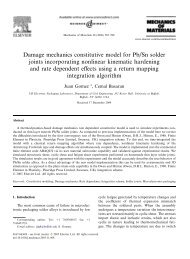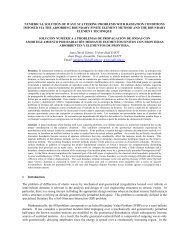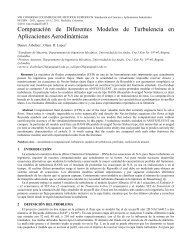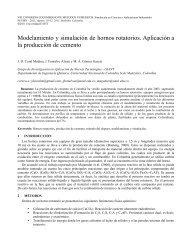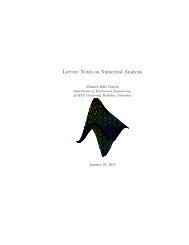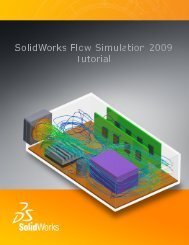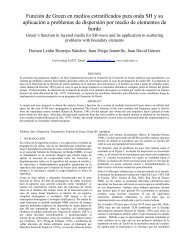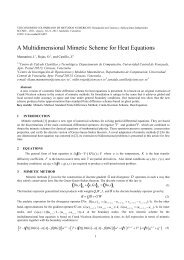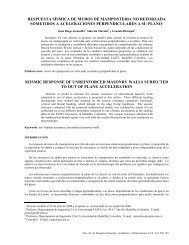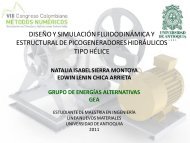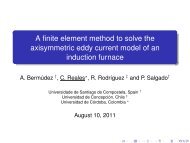Workbench Mechanical - Introduction to Contact
Workbench Mechanical - Introduction to Contact
Workbench Mechanical - Introduction to Contact
Create successful ePaper yourself
Turn your PDF publications into a flip-book with our unique Google optimized e-Paper software.
<strong>Workbench</strong> <strong>Mechanical</strong> - <strong>Introduction</strong> <strong>to</strong> <strong>Contact</strong><br />
… Comparison of Formulations<br />
Training Manual<br />
• The table below summarizes some pros (+) and cons (-) with different<br />
contact formulations:<br />
+<br />
-<br />
-<br />
+<br />
+<br />
+<br />
+<br />
Pure Penalty<br />
Good convergence<br />
behavior (few<br />
equilibrium iterations)<br />
Sensitive <strong>to</strong> selection of<br />
normal contact stiffness<br />
<strong>Contact</strong> penetration is<br />
present and<br />
uncontrolled<br />
Useful for any type of<br />
contact behavior<br />
Either Iterative or Direct<br />
Solvers can be used<br />
Symmetric or<br />
asymmetric contact<br />
available<br />
<strong>Contact</strong> detection at<br />
integration points<br />
Augmented Lagrange<br />
May require additional<br />
- equilibrium iterations if<br />
penetration is <strong>to</strong>o large<br />
Less sensitive <strong>to</strong><br />
selection of normal<br />
contact stiffness<br />
<strong>Contact</strong> penetration is<br />
present but controlled <strong>to</strong><br />
some degree<br />
Useful for any type of<br />
+<br />
contact behavior<br />
Either Iterative or Direct<br />
+<br />
Solvers can be used<br />
Symmetric or<br />
+ asymmetric contact<br />
available<br />
<strong>Contact</strong> detection at<br />
+<br />
integration points<br />
-<br />
+<br />
+<br />
+<br />
-<br />
Normal Lagrange<br />
May require additional<br />
equilibrium iterations if +<br />
chattering is present<br />
No normal contact<br />
stiffness is required +<br />
Usually, penetration is<br />
near-zero +<br />
Useful for any type of<br />
contact behavior<br />
Only Direct Solver can<br />
be used<br />
Asymmetric contact<br />
only<br />
<strong>Contact</strong> detection at<br />
nodes<br />
-<br />
+<br />
MPC<br />
Good convergence<br />
behavior (few<br />
equilibrium iterations)<br />
No normal contact<br />
stiffness is required<br />
No penetration<br />
Only Bonded & No<br />
Separation behaviors<br />
Either Iterative or Direct<br />
Solvers can be used<br />
Asymmetric contact<br />
only<br />
<strong>Contact</strong> detection at<br />
nodes<br />
– Note that some <strong>to</strong>pics, such as symmetric contact or contact detection, will be discussed<br />
shortly<br />
ANSYS, Inc. Proprietary<br />
© 2009 ANSYS, Inc. All rights reserved.<br />
3-13<br />
April 30, 2009<br />
Inven<strong>to</strong>ry #002659



